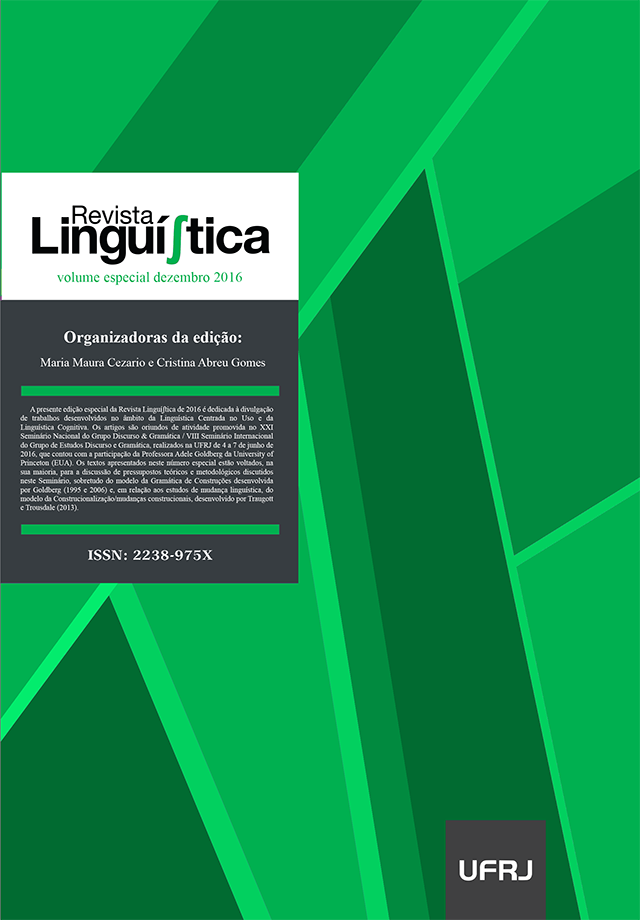Trajetórias fonológicas: evolução e complexidade
DOI:
https://doi.org/10.31513/linguistica.2016.v1n1a5448Abstract
Este artigo analisa diversos fenômenos fonológicos do português brasileiro que são tradicionalmente considerados independentes: nasalização de vogal, vocalização de lateral, lenição de róticos e epêntese. Argumenta-se que estes fenômenos, de fato, refletem uma trajetória do português brasileiro em quesílabas fechadas se adaptam em sílabas abertas. A motivação para esta adaptação é o não-equilíbrio do sistema. A abordagem teórica é pautada nos Sistemas Adaptativos Complexos. Sugere-se que a análise apresentada neste artigo é superior a uma análise fragmentada dos diversos fenômenos fonológicos, pois permite agrupar tendências análogas (em prol de sílabas abertas) e motivar percursos futuros (emergência de sílabas complexas) que evoluirão com o sistema ao longo do tempo. Evidências indicam que são as diversas interações complexas entre os componentes do sistema que promovem a evolução da língua, com estabilidade e dinamicidade.
Downloads
Downloads
Published
Issue
Section
License
Authors who publish in the Revista Linguí∫tica agree with the following terms:
The authors maintain their rights, ceding to the journal the right to first publication of the article, simultaneously submitted to a Creative Commons license permitting the sharing with third-parties of published content as long as it mentions the author and its first publication in the Revista Linguí∫tica.
Authors may enter into additional agreements for the non-exclusive distribution of their published work (for example, posting in online institutional or non-profit repositories, or book chapters) so long as they acknowledge its initial publication in the Revista Linguí∫tica.

The journal Revista Linguí∫tica is published by the Post-Graduate program in Linguistics of UFRJ and employs a Creative Commons - Attribution-NonCommercial 4.0 International (CC-BY-NC).









